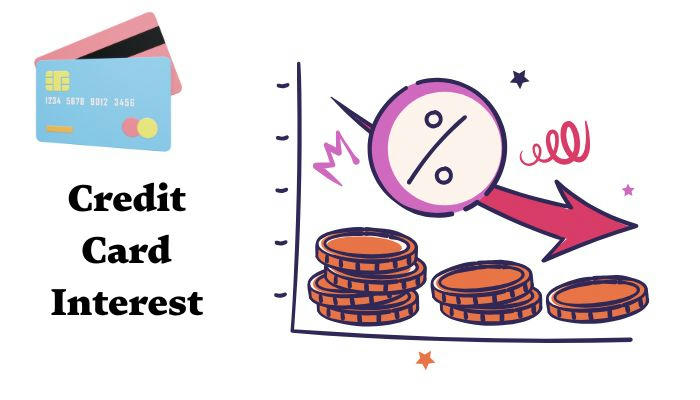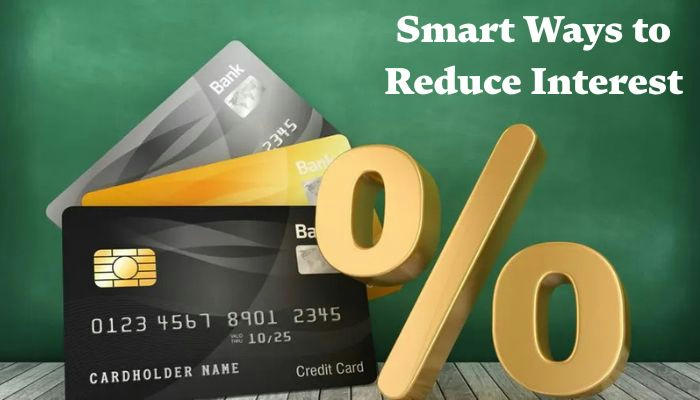Smart Ways to Avoid Paying Interest on Your Credit Card
Credit cards offer convenience and flexibility, but they can also become costly if balances aren’t managed carefully. One of the most common expenses associated with credit cards is interest, often triggered by carrying unpaid balances from month to month.
Fortunately, there are proven ways to avoid or reduce interest charges—starting with a better understanding of how interest actually works.
How Credit Card Interest Works

Interest on credit cards is calculated based on APR—the annual percentage rate. However, unlike loans where APR might include fees, credit card APR is focused solely on the interest charged for unpaid balances.
Here’s how it accrues:
Your APR is divided by 365 to get the daily periodic rate.
Each day, that rate is applied to your average daily balance.
Interest compounds, meaning today’s unpaid interest increases tomorrow’s balance.
The result is a monthly finance charge added to your card—unless you take specific actions to prevent it.
Strategy 1: Always Pay in Full
The most effective way to avoid paying any interest is to pay your full statement balance by the due date every month. When the entire balance is cleared, no interest is charged on those purchases.
To stay on track:
Set payment reminders
Make payments weekly or biweekly to reduce end-of-month pressure
Consider using autopay for at least the minimum due
This habit not only avoids interest—it can also improve your credit score over time by keeping your credit utilization low.
Strategy 2: Use the Grace Period Wisely
Most credit cards offer a grace period—the time between the end of your billing cycle and your payment due date. If your balance is paid in full during this time, new purchases won’t incur interest.
According to the Consumer Financial Protection Bureau (CFPB), grace periods typically last 21 to 25 days.
However, grace periods disappear if even one month’s balance isn’t fully paid. After that, interest starts accruing on new purchases immediately.
Tip: Check your credit card agreement or call your issuer to confirm whether your card offers a grace period and under what conditions.
Strategy 3: Consider a 0% APR Promotional Card
Some credit cards offer a 0% interest rate for a limited time—often between 6 and 18 months—for new purchases or balance transfers. These promotions can help:
Pay off existing credit card debt with no interest during the promo period
Make large purchases and pay them down gradually
Before applying:
Calculate if you can pay the balance off before the promotional period ends
Consider balance transfer fees (typically 3% to 5%)
Avoid new purchases that may not be included in the 0% offer
This approach works best with disciplined repayment and no additional spending.
Strategy 4: Limit Spending to What You Can Afford
Avoiding interest becomes harder when monthly expenses exceed income. Creating a realistic budget can help ensure that every credit card purchase can be repaid in full.
Key steps:
Track fixed and variable monthly costs
Set spending limits for each category
Leave room for unexpected expenses
Financial experts often recommend the 50/30/20 rule: 50% of income for needs, 30% for wants, and 20% for savings or debt repayment.
Strategy 5: Plan Ahead for Large Purchases
Not all big expenses can be avoided, but planning for them can prevent interest accumulation. Consider:
Saving in advance
Using a 0% APR card (with a clear repayment plan)
Spacing out non-urgent purchases
Impulse buying often leads to higher balances and longer payoff periods, increasing the likelihood of interest charges.

Already Paying Interest? Here’s How to Reduce It
Use a Personal Loan to Consolidate Debt
Debt consolidation loans may offer lower interest rates compared to credit cards, especially for borrowers with strong credit. Benefits include:
Fixed monthly payments
Predictable payoff timelines
Potential interest savings
Make sure to compare lenders, fees, and prepayment penalties before applying.
Make Multiple Payments Each Month
Since credit card interest is calculated daily, making several smaller payments throughout the month reduces your average balance—and your interest.
This is often referred to as the 15/3 payment method (pay once 15 days before the due date and again 3 days before).
Try the Debt Avalanche Approach
If you carry multiple balances, prioritize paying off the one with the highest interest rate first while making minimum payments on others. This technique saves more money over time than focusing on the lowest balance (the “snowball” method).
Final Thought
Credit card interest isn’t unavoidable—but it does require a plan. Whether you’re just starting to build good habits or working to reduce existing debt, simple actions like full monthly payments, smart promotional use, and better budgeting can go a long way.
Understanding how interest works, and taking proactive steps to minimize or avoid it, not only saves money but also supports long-term financial stability.
